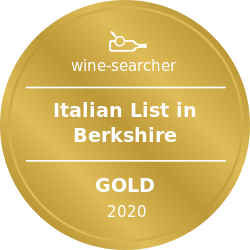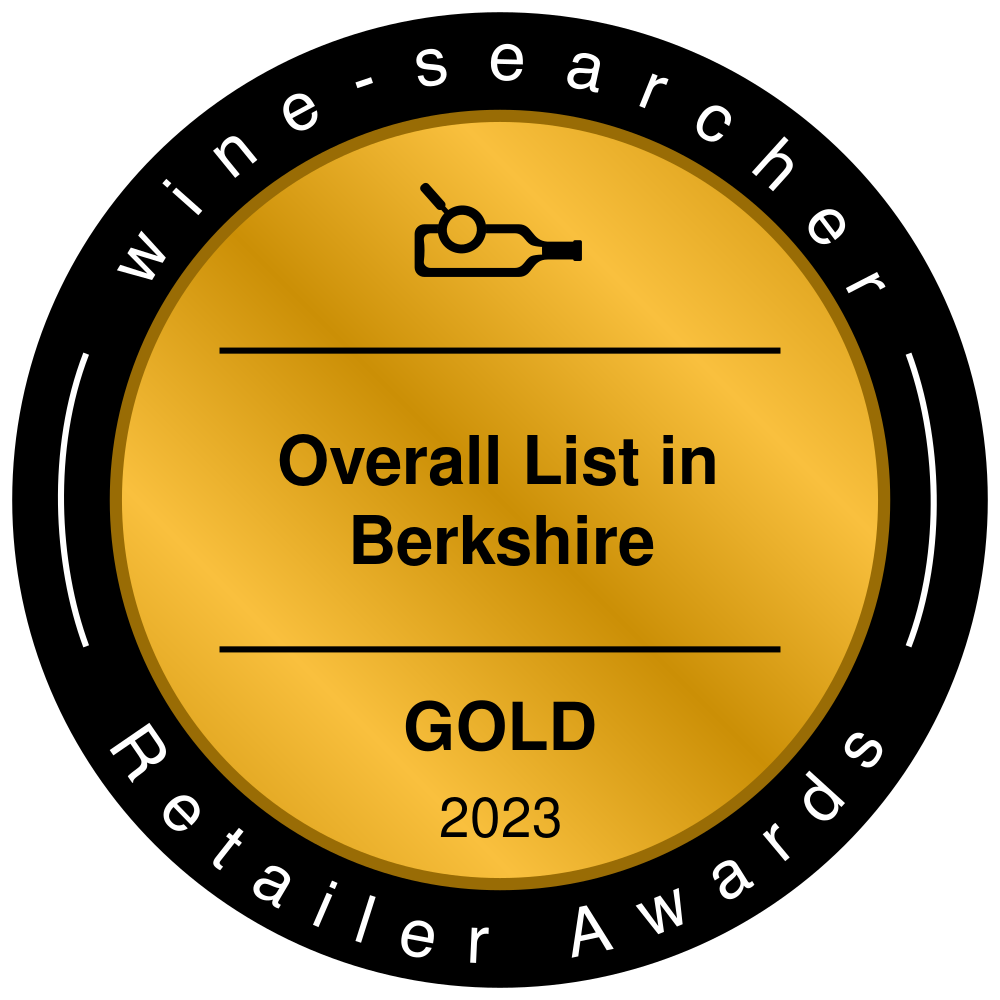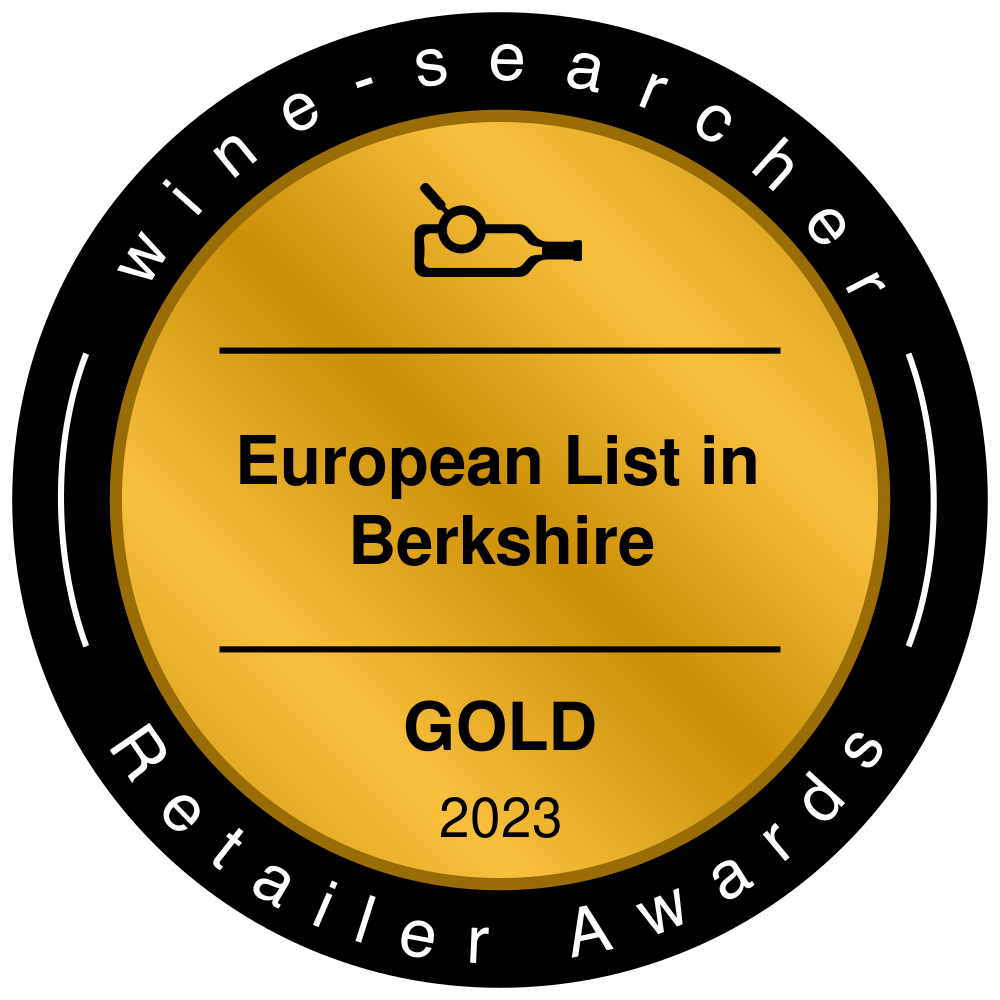A rounded, well-structured Cognac, with a fine and intense nose showing lots of maturity has kept all the elegance and finesse typical of Cognacs from the Grande Champagne area.
Delivery Charges
*Local Free Delivery: SL3 and SL4 postcode (Windsor/Datchet)
*Local Free Delivery: All SL (Except SL7), HP9, GU25, TW18, TW19 & TW20 postcodes. (Min. 6 bottles or 1 Hamper or 1 of our selected Wine cases purchased)
- England and Wales £12.00
- England and Wales Free Delivery (Over £200 purchased)
- Northern Ireland £30 (All BT postcodes)
- Scotland £15.00 (EH, FK, G, KA, KY, ML, DG and TD postcodes)
- Scottish Highlands and Islands £ 30.00 (All AB; DD; HS; IV; KW; KA27-28; PA; PH; TR21-25; ZE postcodes)
More Information
CognacThe Cognac Delimited Area extends along the banks of the Charente all the way to the Atlantic coast. In the heart of the region lies Jarnac, Segonzac and Cognac which gave its name to the spirit. Cognac lies 465 kilometers south-west of Paris and 120 kilometers north of Bordeaux.The entire Cognac vineyard covers around 80.000 hectares.
Grape varieties
The main grape variety that is planted is Ugni blanc (mostly ""Folle Blanche"" and ""Colombard""). This slow ripening variety is very resistant to diseases and produces a wine that has two vital qualities : a high level of acidity and a generally low alcohol content.
Sub-Regions
The cognac region is characterised by the great diversity of its soils : uncovered champagne plains with chalky soil, stony red-soiled plains and green valleys separating hillsides and marshlands, crossed by woods of various species of trees. There is only one zone which carries the ""Appellation d'Origine Controlee"", but there is more than just one type of cognac. This zone is itself divided into different vintage regions which have each their own characteristics.The 5 regions spread in concentric circles around Segonzac and Cognac. They are the heart of the country which produce the most beautiful spirit in the world.
The Grande-Champagne
Situated in the heart of the cognac region, Grande-Champagne is the most prestigious cognac vintage. It has a very specific type of soil called the campus, the climatic conditions are the most favourable, protected to the west from the Atlantic climate and to the east from the continental climate. Grande-Champagne spirits distinguish themselves by the floral dominance of its fragrance which is reminiscent of the vine's flower, dried vine shoot or even dried lime tree leaves. Its bouquet is remarkable. After ageing, the aromas grow and mature. Floral scents turn into fruity aromas.
The Petite-Champagne
This large semi-circle covers an area whose soil, called ""santonian"" (chalk of Saintes) is very rich in limestone. A few regions in the Petite-Champagne produce a Cognac that may equal and even surpass the quality of some Grande-Champagne Cognacs. It also distinguishes itself by a dominating floral and somewhat fruity scent but the bouquet is much shorter.
The Borderies
This enclave of vineyards to the north of Cognac produces excellent nutty flavoured spirits on a decalcification soil. Some houses use it as a base for their best cognacs. A collection of suave scents brings to mind the floral fragrance of a bunch of violets or irises. Very finely scented, Borderies spirits have the added ability to age and mature faster than that of Champagne.
The Fins Bois
Forming a large ring with various types of soil, this region produces cognacs of many different qualities. The best of them see the light on hard limestony soils to the north-east and south-east. Fins Bois spirits are heavier and age rapidly but their fruitiness, roundness and smoothness on the palate are what give them their charm.
The Bons Bois and Bois Ordinaires
This belt which marks off the cognac region is made of clay soils that are poor in limestone. Less length in the mouth and age much to rapidly.
Winemaking
The pressing of the grapes is done immediately after harvest. Nowadays, wine producers use horizontal flat presses or pneumatic presses. The juice is left to ferment straight away. The sugars are transformed into alcohol. The addition of sugar (chaptalisation) is not permitted. The wines are then stored with their residue.These two steps (pressing and fermentation) are closely monitored for they will have an important influence on the final quality of the spirit. The wines that are produced after roughly 3 weeks of fermentation (from the end of October till the last days in November) have an alcohol content of around 8%vol. They are just perfect for distillation.
Distillation
The Cognac region has a limestony soil and a maritime and temperate climate that is humid, hot and sunny enough to ripen the grapes. Despite all these assets, the wines that are produced would not deserve their reputation if it were not for the alchemy that takes place in the pot still and that produces the cognac. The alcohol is produced during fermentation from the sugars that are naturally present in the fruit. It is found associated with many other components ; it has to be separated from these complex mixes, process which is achieved by distillation. The process of separation which takes place during distillation is based on the difference in volatility between all components. The only volatile substances that make it into the spirit become the main elements of the bouquet.
The Pot-still
The Pot-still is entirely made of copper because copper has a catalysing effect and it does not affect the taste of the spirits. The bottom of the main cauldron - where the liquid to be distilled is placed - is in permanent contact with the bare flame of the furnace. The wine is uniformily heated with its dregs over a large surface. The Alcohols and ethers evaporate. The onion shaped top canalises the vapours into the swan neck, through the ""chauffe-vin"" cooling them slightly before they reach the cooling tank known as ""the pipe"". The vapours travel through a long coil, condense and are collected in liquid form in an oak cask.
Double distillation
Distillation is carried out in two steps : two heating cylcles called ""chauffes"". The first ""chauffe"" which lasts between 8 and 10 hours produces a cloudy liquide called ""brouillis"" with an alcohol content of 24 to 30 %vol. The""brouillis"" is then redistilled. This second heating is called ""la bonne chauffe"" and lasts about 12 hours. This time, only the best, that is ""the heart"" of the distillation, is kept. The distiller separates the ""heart"" from the ""heads"" and the ""tails"" through a process called ""cutting"". The heads and the tails are mixed with the next batch of wine or brouillis in order to be redistilled. Thus only the heart, a clear spirit averaging between 68 and 72% vol., is kept for ageing to become Cognac.
Ageing
The distilled wine must age before becoming Cognac. This ageing takes place in 270 to 450 litre oak casks. The natural level of humidity in the cellars is one of the main influencing factors on the ageing of the spirits due to its effect on evaporation. The charentais coopers have traditionally used wood from the Limousin and the Troncais forests. The Troncais forest, in the Allier department of France, provides soft, finely grained wood which is particularly porous to alcohol. The Limousin forest produces medium grained wood, harder and even more porous. Today, the Cooperage industries of the Cognac region, with their ancestral know-how, export all over the world. A Cognac's age is determined solely by the number of years that it has matured in wooden casks. The fundamental principle behind this fact is that in a glass bottle Cognac stops ageing. A Cognac that has come straight from the pot still has an alcohol content of about 70%. As it ages, Cognac concentrates the aromas and the colours as it darkens to a warm shade of ambre. During the first few years (from 0 to 5 years), the bouquet mellows and becomes less agressive. The spirit turns to a shade of yellow that darkens more and more. The odour of oakwood develops. Next, the taste becomes more pleasant and smoother. The oakwood fragrance introduces scents of flowers and vanilla...Beyond 10 years of age, Cognac reaches maturity and has a much darker colour. The bouquet is at its best and the famous ""rancio"" appears.
Angel's share
In order to develop all its qualities and also to reduce its alcohol content, Cognac must mature for many years in oaks casks.During this ageing, Cognac loses between 3 and 4 % of its volume every year. This evaporation represents 27 million bottles per year for the Cognac region ! Although it is a loss, it is a necessity for the maturing process and is poetically known as ""the ange'ls share"".
Blending
From beginning to end, the making of cognac is the subject of a complex alchemy. The quality of each and every cognac depends as much on the ""blends""as on the care given to the vine, the grape harvest, the wine making, the distillation and the ageing in casks. The cognac that you drink is in fact the fruit of ""blends"" of different vintages and different ages. It is these blends that produce the harmony in the taste. The ""blends"" are the result of unwritten ancestral know-how. They are the secret of the ""maitres de chai"" or ""cellar masters"", persons of exception who watch over the cognac from its exit from the still to the bottling. It is the cellar masters who, after years of patient training by the elders, decide to decant casks or to change cellars in order to best develop the quality of the spirit. They also decide when and how to assemble the spirits. It is often said of the cellar masters that they alone represent the true value of Cognac houses. The blending is done in several steps that are spread throughout the entire ageing process. The cellar masters do not use any instruments of measure, they rely entirely on their judgement of taste and smell. Their senses are so accurate that they are always right.
Blended Cognacs
Cognac, which has a worlwide reputation to protect, has established very strict rules to protect consumers but also to prevent its production and presentation from being counterfeited. This implies compliance to many rules for distillation, for stocking, for ageing or for blending etc.A cognac that is ready to be sold on the open market must be at least two and a half years old starting from the 1st October of the year of harvest.
***, V.S. (Very Special), Selection, de Luxe. The youngest spirit of the blends may not be less than four and a half years old. But often, the spirits are much older.
V.S.O.P., Reserve... The youngest spirit in the blends for Very Superior Old Pales, also called Reserve Cognacs is between four and a half and six and a half years old.
Napoleon, Imperial, Hors d'age, Vieille Reserve, X.O. All terms like Napoleon, XO or ""very old"" are blendss of spirits that are at least six and a half years old.
However, most Cognacs are well above this minimum imposed by the regulation. In fact some of the most prestigious names assemble spirits that are each at least dozens of years above the minimum required. The term ""Fine"" is authorised by the 1938 law and qualifies a vintage spirit.
For example, a ""Grande Fine Champagne"" qualifies a Grande Champagne vintage cognac assembled with spirits that come solely from the Grande Champagne region.On the other hand, the ""Fine Champagne"" appellation qualifies a cognac with at least 50% of Grande Champagne spirits and the rest from Petite Champagne.
The appellations by sub-region.
A "Grande Champagne" or "Fine Grande Champagne" cognac is assembled with 100% Grande Champagne spirits. A "Petite Champagne" or "Fine Petite Champagne" cognac is assembled with 100% Petite Champagne spirits. A "Fine Champagne" cognac is the result of an assembly of Grande and Petite Champagne spirits with a minimum of 50% from Grande Champagne. A "Borderies" or "Fine Borderies" cognac contains 100% of spirits from the Borderies area. A "Fin Bois" or "Fine Fins Bois" cognac contains 100% of spirits from the Fins Bois area. A "Bons Bois" ou "Fine Bons Bois" cognac contains 100% of spirits from the Bons Bois area.











